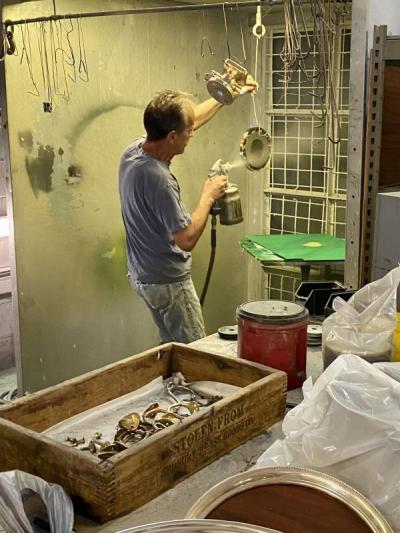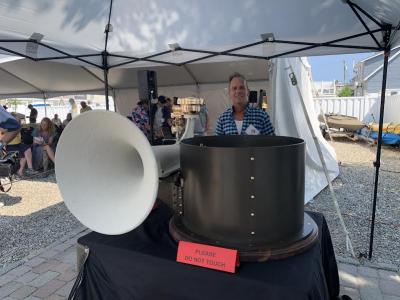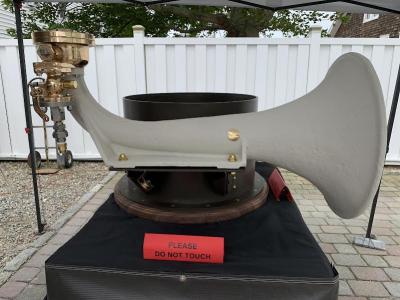Blast from the past: Town man restores Andrea Doria foghorn
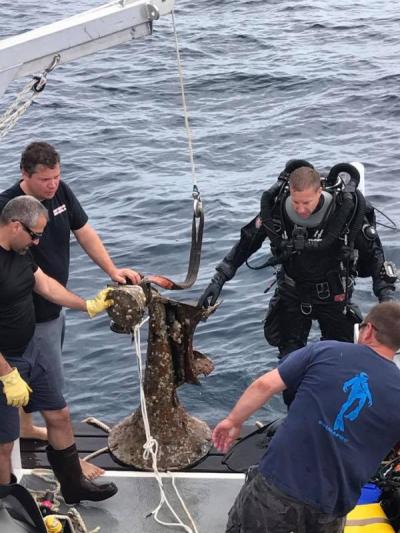
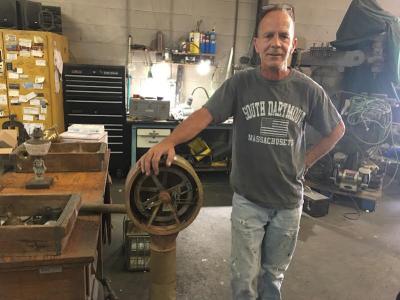
A foghorn sounded throughout the night of July 25, 1956 as the ocean liner Andrea Doria traveled through a dense fog off the Massachusetts coast, enroute to New York from the Mediterranean.
Then, chillingly and abruptly, the warning sound that cut through the soupy air stopped.
The 700-foot ocean liner collided with a second vessel off Nantucket and sank into history, its foghorn falling silent for more than half a century.
But the haunting call was not doomed to history.
Thanks in part to the efforts of Scott Ciardi, a Dartmouth craftsman who is considered one of the best at restoring shipwreck remnants, the foghorn sounded again, exactly 65 years after its last note was heard, at a July 25 ceremony at the Maritime Museum in New Jersey.
“I remember the evening of the collision as if it were yesterday,’’ survivor Pierette Domenica Simpson, who was nine when the ship sank and attended Sunday’s ceremony, said in the provided material. “There was a dense fog, and the fog horn sounded into the night. I suddenly felt an abrupt, huge jolt accompanied by a thunderous noise.’’
At 11 p.m., the ship collided with the 524-foot Stockholm, killing 46 of the 1,706 souls aboard the Andrea Doria and five on the Stockholm. The Andrea Doria remains at the bottom of the ocean, but items have been recovered in authorized salvage expeditions.
One of the ship’s two foghorns returned to light in 2017, when divers from the New Jersey-based Dive Vessel Tenacious salvaged the item from the wreck, where it had been located a year earlier by a previous expedition.
The foghorn underwent a massive restoration effort.
Ciardi, owner of Brass from the Past in Dartmouth, cleaned and restored the horn’s bronze parts to a mirror-finish.
The job is special, he said, because “you’re saving pieces of history.’’
This is just the latest in a series of pieces Ciardi has restored after they have been salvaged from shipwrecks.
He is “hands down, the best at what he does,’’ said Jennifer Sellitti, spokesperson for Dive Vessel Tenacious Atlantic Wreck Salvage. “Divers from all over the East Coast and even around the world trust him to refinish one-of-a-kind artifacts salvaged from the deep.’’
He was asked to restore four telegraphs that were salvaged from the S.S. Carolina, which was sunk by a German U-boat off the New Jersey coast in 1918.
Working on these pieces takes him back to the night they sank into the sea.
“The guy on the bridge [of the Carolina] probably saw this in his last few minutes,’’ he said of the telegraphs he is working on.
His hands, and his shop, have held disparate pieces of history.
A second place trophy earned by legendary Boston Marathon runner Johnny Kelly in 1940 sits tucked away in a corner of his shop, where he is working to restore it.
Ciardi has restored the copper bathtub used by Anna McNeill Whistler, the subject of the famous portrait Whistler’s Mother done by her son and a statue of Amelia Earhart that ended up in the Smithsonian.
One of the oldest pieces he has worked on, he said, is a safe that was made in 1640.
“It’s almost as old as the town of Dartmouth,’’ Ciardi noted.
Seeing a piece he worked on as the subject of Sunday’s ceremony was “very humbling,’’ he said.
Restoration brings great rewards, he said.
“You’re bringing it back,’’Ciardi said, “and allowing people to see it.’’



